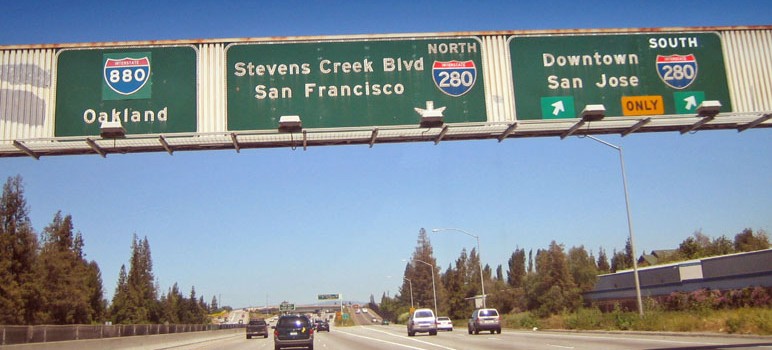Local leaders in transportation, education, housing and equity convened last week in Mountain View’s Computer History Museum for the 2015 Silicon Valley Regional Economic Forum. All four of the topics are essential when discussing the vitality and health of our region, especially when it has been—for all intents and purposes—the driving force behind California’s resurgent economy.
The transportation panel went first, followed by the education panel. As an observer, I came away with several observations and some personal grades.
The Silicon Valley region is on the cusp of leading the nation in effective transportation systems. Some presenters heralded the idea that the Bay Area can approach the efficient systems already in place in Copenhagen and Amsterdam.
Incorporated in our transportation mix is Caltrain and its future electrification, Bart to Berryessa in San Jose and new funding to complete Bart to Diridon and Santa Clara Caltrain stations,. We also have continued and expanded commuter shuttle buses through private corporate funding, VTA enhancements to afford more bike space within each bus and light rail car, increased bike lanes and bike sharing kiosks in cityscapes, high-density housing next to transportation hubs, and fixing potholes—which are admittedly some of the worst in the nation—while developing funding for the upkeep of our highways/freeways systems.
If enlightened enough as a region, we will vote to fund the necessary infrastructure needs to create an efficacious and cost-effective 21st century transportation system. At the completion of the panel I was inspired and optimistic about the future of our transportation systems for the foreseeable future.
Transportation Grade: A+ … and Incomplete
Muhammed Chaudhry, president and CEO of the Silicon Valley Education Fund, moderated the second panel on education. The group was compirsed of Matt Hammer, executive director for Innovate Public Schools; Ken McNeely, president of AT&T’s California opoerations; Jon Gundry, superintendent of schools for Santa Clara County; and Meera Mani, director of the David and Lucille Packard Foundation.
Education is the foundation that drives economic development for a region from birth to career. The panelists were exceptional in their ability to cogently and deeply tackle Chaudhry’s questions. Yet from my vantage point, the region is much further along in creating a world-class transportation system than a world-class education system.
Each panelists addressed the key ingredients: high quality early childhood education for all, the EduCare early learning model in Franklin-McKinley School District, the effective use of technology in all classrooms by students and teachers, innovating curriculum designed to teach coding languages, increasing the number of female graduates going into STEM careers, using personal student data to increase achievement, expanding career technical education opportunities, and having a quality teacher in every classroom.
The reality of today’s effort is fragmented at best, with 54 school districts in Santa Clara and San Mateo counties. (By comparison, there is only ONE school district in San Francisco.) Charters and traditional public schools and districts are continuing down a path of legal battles rather than cooperation. Trust is currently breaking down in Franklin-McKinley and San Jose Unified districts. The racial achievement gap continues to be far too large, and we have no transparent data with the loss of state testing the last two years.
Education Grade: D+
The fierce urgency of now was clearly demonstrated in the transportation panel. The leaders have plans to go to the voters for a sales tax in 2016, with additional details on how to allocate the new transportation revenue. This demonstrates that unconsciously, I believe, we have placed our vital transportation needs ahead of our essential education needs.
The last two panels dealt with housing and equity. Both topics are key to a thriving region and need attention. But the region already has strong leadership in these key areas.
San Jose Mayor Sam Liccardo has made homelessness and high-density urban housing solutions a priority of his administration. Former San Jose Mayor Ron Gonzalez, now of the Silicon Valley Hispanic Foundation, has helped create a new initiative to fund 50 female and 50 male Latino students with $10,000 scholarships each year for five years in STEM education. And Ben Fields, executive director of the South Bay Labor Council, has kept his organization focused on homelessness and a fair living wage for workers.
Housing Grade: Incomplete
Equity Grade: C+


As usual, the group of “experts” on education didn’t include a single classroom teacher Perhaps it would have been relevant to include an actual teacher or two in the group. The real education process isn’t in those “special programs”, but in the everyday grind of teachers and students interacting to create learning. But that isn’t newsworthy, is it?
> As usual, the group of “experts” on education didn’t include a single classroom teacher.
Well, it didn’t include any authentic parents, or students, either, And the only “taxpayers” it included were foundation grifters and crony capitalist corporatists.
And the Transportation “experts” only theorized and opined on “mass” transportation, where the overwhelming number of people get around via cars on potholed roads and highways. And, oh yeah, FREIGHT! The economy of Silicon Valley is founded on commerce which requires moving around massive amounts of stuff, almost all of it in trucks and vans on — hello — ROADS AND HIGHWAYS.
If you want to know why central planning flopped in the Soviet Union, its because they had “experts” sitting around the table fixing problems they didn’t understand, not knowing that they didn’t understand.